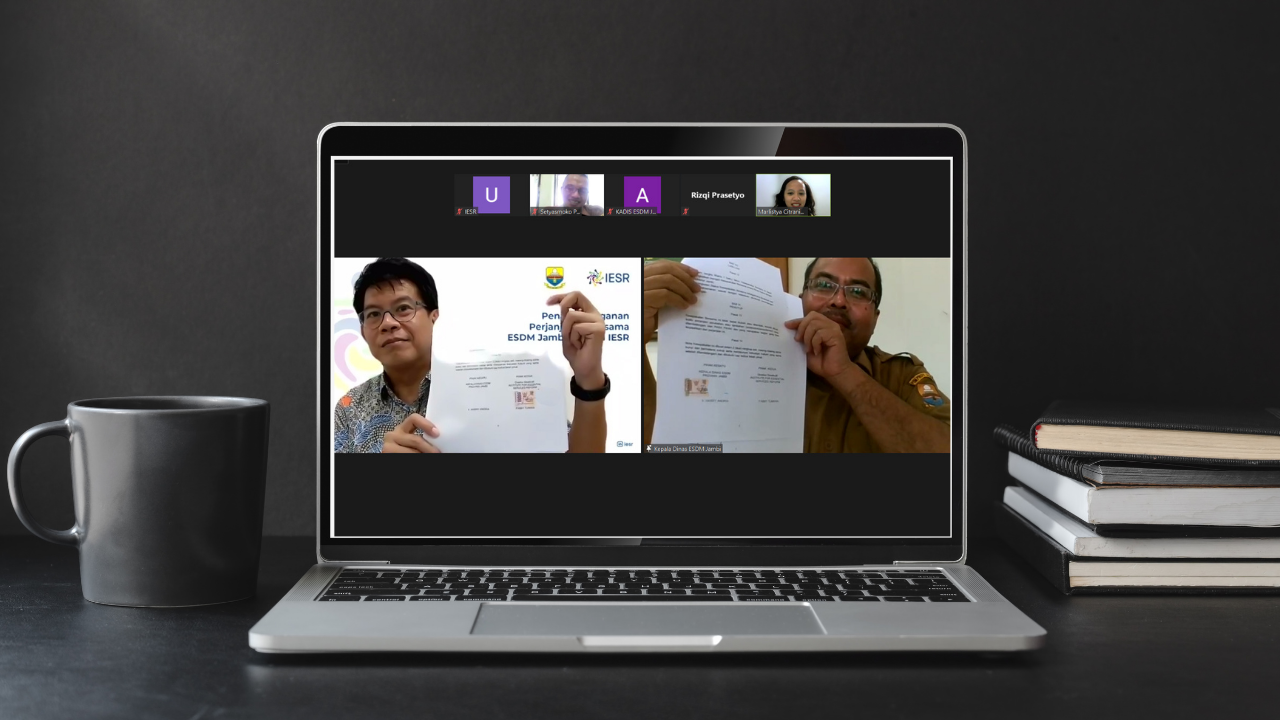Committed to Achieves Regional Renewable Energy Mix Target 2025 and Boosts Energy Transition, Jambi Government Signed MoU with IESR
Jambi has a regional renewable energy mix target of 24 percent in 2025 and 40 percent in 2050. This target has been stipulated in local regulation, Perda No. 13 of 2019, concerning the 2019-2050 Regional Energy General Plan (RUED). The target number of the Jambi renewable energy mix is larger than the national, which are 23 percent and 31 percent in 2025 and 2050 respectively. To overcome challenges, such as the different understanding of energy transition definition, the Jambi government, through the Department of Energy and Mineral Resources (ESDM), signed the MoU with Institute for Essential Services Reform (IESR). Moreover, increasing human resources capacity and enabling supporting infrastructure are also Jambi ESDM’s need to develop renewable energy.
“The potential for renewable energy in Jambi is quite impressive. However, it is not yet a priority, so we should start to develop it with a correct understanding of the energy transition. For this reason, we are working with IESR to define the right direction for maximum results,” said the Head of the Jambi ESDM, Harry Andria, at the Signing of the MoU between the Jambi Province ESDM Service and IESR (22/3 ).
Harry thought that understanding the definition of the energy transition at the regional executive and legislative levels will help in implementing the programs to achieve regional renewable energy targets.
Agreed, Fabby Tumiwa, Executive Director of IESR on the same occasion, also stated that the energy transition has become a phenomenon that is continuously being adopted by many countries in the world. They are committed to fulfilling the Paris Agreement to keep the earth’s temperature less than 2 ° C.
“Energy transition is unnegotiable. Accelerating renewable energy requires the commitment of all stakeholders, both regional leaders, policymakers, and the affected communities. Instrumental collaboration is needed to achieve the RUED target and build a joint consensus for the application of renewable energy,” he said.
Fabby also views that the implementation of the energy transition and the achievement of renewable energy targets in Jambi will be advantageous for Jambi in the future. Jambi will continue to develop its economies, such as in the industrial, business, agriculture, fishery, and tourism sectors. It will require more energy, especially renewable energy.
IESR will provide technical assistance to the Jambi Government in increasing the utilization of renewable energy potential, energy conservation, and energy transition. The event was closed by virtually signing the MoU document between the Jambi ESDM Agency and the IESR.

